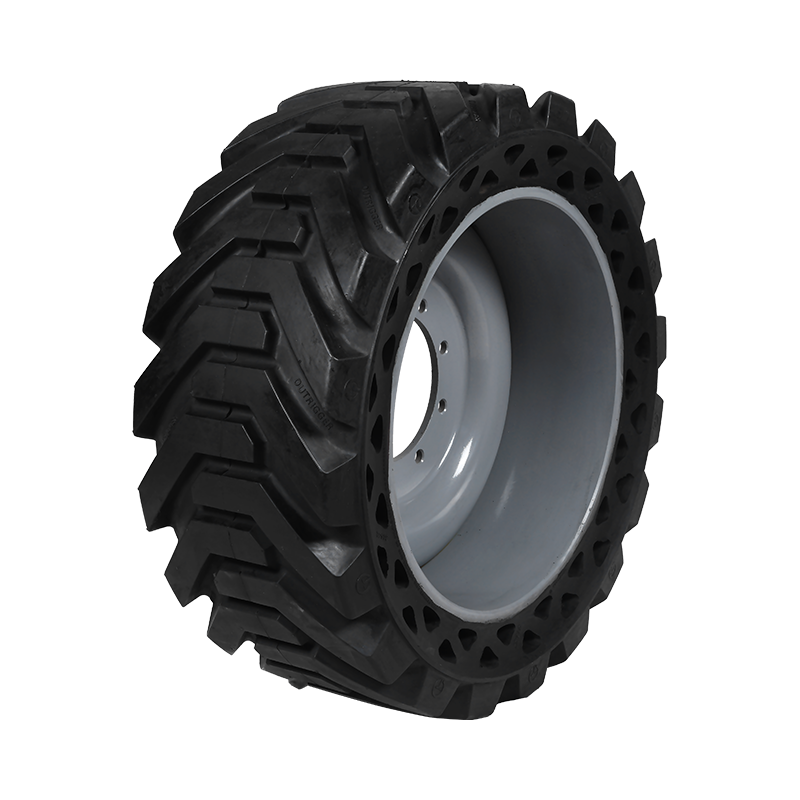The Science Behind Foam-Filled Tires: Innovation in Tire Technology
Composition and Construction of Foam-Filled Tires
At the core of foam-filled tires is a special type of foam, typically made from a blend of polyurethane or rubber-based materials. The foam is designed to provide a resilient structure that mimics the support of air in a traditional tire, but without the risk of air loss.
The tire itself consists of three main components:
Rubber Tire Casing The outer shell of a foam-filled tire is made from durable rubber, much like a conventional tire. This casing is reinforced to withstand the stresses and strains that occur during use, providing both flexibility and strength.
Foam Material The foam material inside the tire is typically injected under pressure, filling the space within the tire casing. The foam is engineered to be lightweight, flexible, and resilient, offering a balance between comfort and durability.
Inner Support Layer Some foam-filled tires also include an additional layer of support, such as a steel belt or mesh, to reinforce the tire's structure and further prevent any deformation or collapse under load.
How Foam-Filled Tires Work
Foam-filled tires work by replacing the air inside the tire with a solid or semi-solid foam. This foam material provides the tire with several advantages:
Shock Absorption: The foam acts as a shock absorber, helping to reduce the impact forces that vehicles experience on rough terrain or during heavy loads. This contributes to a smoother ride and less wear on the vehicle.
Load Distribution: Foam-filled tires are designed to distribute weight evenly across the tire's surface. This allows them to carry heavier loads without the risk of tire blowouts or uneven wear.
No Air Pressure Variability: Traditional tires are subject to fluctuations in air pressure due to temperature changes or slow leaks. Foam-filled tires are immune to these issues, ensuring a consistent performance regardless of external conditions.
Technological Advancements in Foam-Filled Tire Manufacturing
The development of foam-filled tires has been made possible by advancements in materials science and manufacturing techniques. Innovations in foam technology have allowed tire manufacturers to create lighter, more durable foams that retain their structural integrity under extreme conditions.

Some key technological advancements include:
Enhanced Foam Materials: Modern foams are engineered to be lightweight yet durable. These advanced foams are designed to withstand the heat and stress generated during tire use without breaking down.
Injection Molding Technology: The process of injecting foam into the tire casing has also evolved, allowing for precise control over the foam's density and distribution. This ensures that the foam-filled tire provides the desired balance between comfort and strength.
Environmental Considerations: Some manufacturers are now exploring eco-friendly foam materials, including biodegradable options that reduce the environmental impact of foam-filled tires.
Applications and Industries Benefiting from Foam-Filled Tires
Foam-filled tires are ideal for a range of heavy-duty applications, including:
Construction and Mining Equipment Foam-filled tires are essential for construction machinery that operates in tough environments where punctures are common. They ensure that equipment such as backhoes, bulldozers, and dump trucks can work uninterrupted, improving efficiency and reducing downtime.
Agriculture Farming equipment like tractors and combine harvesters often operate on uneven, rocky, or muddy terrain. Foam-filled tires offer increased durability, enabling these machines to navigate rough fields without the risk of tire damage.
Industrial Material Handling Forklifts, pallet jacks, and other material handling equipment are often used in environments where tire damage is a concern. Foam-filled tires provide the durability and low-maintenance benefits needed to keep operations running smoothly.
CONTACT US
-

Email: SMT001@saimeite-tyre.com
-

Phone: +86-18451337018No. 1, Renmin South Road, Yandu District, Yancheng City, Jiangsu Province, China

 English
English 한국어
한국어 Français
Français Español
Español











